Introduction to Oak Island
Oak Island, a small, mysterious island off the coast of Nova Scotia, Canada, has intrigued adventurers, treasure hunters, historians, and geologists for centuries. Nestled in the heart of the North Atlantic, Oak Island’s history is steeped in mystery, mystery that has fueled numerous theories ranging from pirate treasure to ancient civilizations. This article aims to delve deep into the history, climate, ecology, and geology of Oak Island, shedding light on the enigmatic features that continue to baffle the world and spark imaginations.

The History of Oak Island: A Legacy of Secrets
The first recorded mention of Oak Island dates back to 1795 when a young man named Daniel McGinnis discovered a strange depression in the earth while walking along the shore. Intrigued, he and his friends began to dig, uncovering a series of strange features, including a circular stone structure, which they believed might be the site of hidden treasure. This marked the beginning of what would become one of the longest and most enduring treasure hunts in history.
Since then, Oak Island has been the focal point of numerous excavations and explorations. Over the years, various individuals and groups have attempted to uncover whatever treasure or secret the island may hold. Some believe that it could be the hidden treasure of the pirate Captain Kidd, while others theorize that the island is a site of an ancient Masonic ritual or even that it holds the fabled Holy Grail. Regardless of the various theories, the island’s history remains deeply entwined with a sense of intrigue, with its true secrets yet to be fully uncovered.
Climate: A Key Factor in Oak Island’s Mystery
The climate of Oak Island plays a critical role in the challenges faced by those who attempt to uncover its secrets. Located in the North Atlantic, Oak Island experiences a temperate climate with relatively mild winters and cool summers. Average temperatures during the summer months hover around 18-22°C (64-72°F), while the winters, although colder, rarely dip below freezing. Despite the mild conditions, the island is subjected to high rainfall throughout the year, which has caused frequent flooding of the various shafts that have been dug in pursuit of treasure.
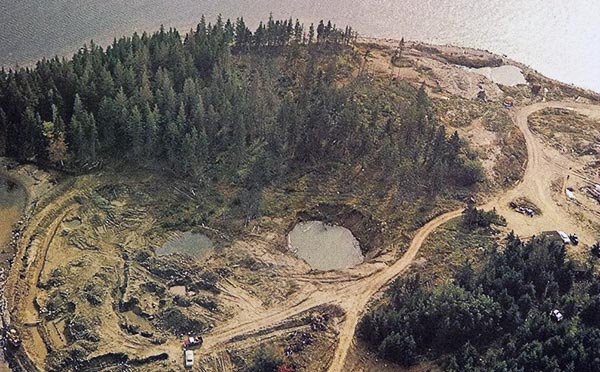
One of the most perplexing challenges of treasure hunting on Oak Island is the island’s drainage system. Flood tunnels and intricate water systems have made digging difficult for centuries. Some researchers claim that these natural features may have been constructed deliberately to protect whatever treasure or artifact lies hidden beneath the island’s surface. These water systems continue to plague modern-day excavations, where pumps are constantly needed to keep the dig sites dry, further complicating the search.
Ecology: A Rich and Varied Landscape
Oak Island is home to a variety of flora and fauna, making it a vibrant ecosystem in the midst of the North Atlantic’s rugged coastline. The island’s plant life is dominated by coniferous forests, with balsam fir, red spruce, and pine trees flourishing in the acidic, nutrient-poor soils. Underneath these towering trees, a variety of shrubs and ferns thrive, including lowbush blueberry, sweet fern, and mosses that help retain moisture in the environment. The island’s coastal wetlands are also home to a range of other plants, including marsh grasses and cattails.
In terms of wildlife, Oak Island is inhabited by a number of bird species, such as the common loon and various migratory waterfowl. Deer, raccoons, and rabbits can be found roaming the island, along with a variety of smaller mammals. The island’s rich ecological diversity contributes to its charm, making it not only a treasure hunters’ destination but also a unique and beautiful part of Nova Scotia’s landscape.
However, despite the ecological wealth on Oak Island, its isolation and limited human activity have preserved the natural balance. The island is not heavily developed, which means that wildlife populations and plant life have remained largely undisturbed. This undisturbed environment provides a glimpse into what the island may have looked like centuries ago before it became the center of treasure hunting activity.
Geology: The Island’s Complex Subsurface
The geology of Oak Island adds an intriguing layer of complexity to the mystery that surrounds it. Oak Island is located within the Atlantic Coastal Plain, characterized by its unique stratigraphy and coastal landforms. Beneath the island’s surface lies a mix of sedimentary layers, including limestone, sandstone, and shale, all of which have contributed to the formation of the island’s unique structure.

The most notable geological feature of Oak Island is its so-called “Money Pit,” the primary site of treasure hunting activity. Over the years, various excavations have revealed a series of layers of oak logs, stone, clay, and charcoal, raising questions about whether the pit was man-made or the result of natural processes. Some have suggested that the pit is a form of ancient burial ground or even a repository for sacred artifacts, while others speculate that the pit was intentionally constructed to conceal treasure.
Geologists have also pointed to the presence of a series of tunnels and water systems beneath the island, which seem to be strategically placed to confuse or impede any would-be treasure hunters. These natural and artificial features continue to be one of the central mysteries of Oak Island and the subject of ongoing debate.
The Oak Island Mystery: What Lies Beneath?
The Oak Island mystery is perhaps one of the most well-known and enduring legends in the world. For over 200 years, countless individuals have tried to uncover the treasure believed to lie hidden on the island. Many theories abound as to what the treasure could be. Some suggest that it is the treasure of pirates such as Captain Kidd or Blackbeard, while others believe it could be the long-lost treasure of the Knights Templar or even the Holy Grail.
The discovery of a strange set of symbols, including a carved stone with mysterious inscriptions, further fueled the mystery. Other theories include the possibility that the island is the site of a secret Masonic or religious artifact, hidden by a group of influential individuals long ago. Despite the numerous excavations, which have included the use of modern technology such as sonar and robotic cameras, no treasure of great value has ever been conclusively found.
One of the key challenges in solving the Oak Island mystery is the presence of elaborate and complex drainage systems that continue to flood the various shafts and tunnels dug in search of treasure. For years, treasure hunters have encountered these flooding problems, which many believe are no coincidence, suggesting deliberate construction of these features to protect the secrets of the island.
Human History: The People Who Shaped Oak Island’s Past
The human history of Oak Island is a fascinating tale that intertwines with the island’s enigmatic reputation. From early Indigenous inhabitants to European explorers, the island has witnessed a range of human activities. The Mi’kmaq people, the Indigenous inhabitants of Nova Scotia, likely used Oak Island as a seasonal hunting ground and fishing site, though little evidence remains to indicate their direct involvement with the island’s more recent mystery.

European settlers arrived in the early 1600s, with the French establishing settlements in the area. However, the island’s true connection to the treasure hunt began with the discovery made by Daniel McGinnis and his friends in 1795. Over the years, many individuals and groups have attempted to unearth Oak Island’s secrets, but their efforts have been stymied by floods, cave-ins, and the sheer complexity of the island’s subterranean features.
Despite these setbacks, the search for treasure has continued through the centuries. Modern-day treasure hunters, including those featured in the popular television series The Curse of Oak Island, have utilized cutting-edge technology to further investigate the site. Despite their best efforts, Oak Island remains as much a mystery today as it was in the 18th century.
The Ongoing Mystery and Future of Oak Island
Today, Oak Island continues to capture the imagination of people around the world. Modern-day explorers and treasure hunters continue to excavate the island, using advanced technology in the hopes of solving the puzzle once and for all. The island has become a popular tourist destination, with visitors coming from all over to witness the excavations and learn about its history. But while new discoveries are occasionally made, the mystery remains unsolved.
Perhaps the biggest question surrounding Oak Island is why, after all these years, the treasure—if it exists—remains hidden. Some believe that the island’s mysteries are part of a larger story, one that involves not only treasure but something far more profound. Whether it’s the long-lost treasure of pirates, ancient religious artifacts, or something else entirely, Oak Island’s legacy as one of the world’s greatest unsolved mysteries will likely continue for generations to come.
In the end, Oak Island is more than just an island; it is a symbol of the unquenchable human thirst for adventure, discovery, and the unknown. The island’s history, climate, ecology, and geology combine to create a unique setting for one of the most enduring mysteries in modern times. Whether or not the treasure is ever found, Oak Island will undoubtedly continue to be a place of intrigue and wonder.
The Mysterious ‘Curse’ of Oak Island
One of the most fascinating aspects of Oak Island’s legend is the so-called “curse.” Over the years, numerous individuals who have attempted to uncover the island’s secrets have met with tragedy or misfortune, adding an eerie dimension to the mystery. The origins of the Oak Island curse are often linked to a series of events that have befallen those who dared to dig for treasure.

The first recorded death attributed to the curse occurred in 1861 when a treasure hunter named Samuel Ball, who had been excavating on the island, died under mysterious circumstances. Over the years, several others have met untimely ends, including those who fell victim to cave-ins or drowned in the flooded shafts. The most famous and tragic incident occurred in 1965 when a drilling rig collapsed, causing the death of two men, further fueling the belief in the island’s curse.
Though skeptics argue that these deaths and misfortunes are simply the result of unsafe excavation practices or natural accidents, the association of tragedy with the island has become an indelible part of its story. The concept of the curse has persisted in popular culture, further romanticizing the island and contributing to the allure of its mystery.
The Search for Answers: Technology Meets Tradition
In recent decades, the pursuit of uncovering the Oak Island mystery has evolved significantly, blending traditional methods with cutting-edge technology. In addition to manual digging and exploration, modern treasure hunters have utilized tools such as sonar scanning, ground-penetrating radar, and remote-controlled underwater drones to search for hidden chambers and artifacts beneath the island.
The use of sonar scans has provided detailed images of the island’s submerged features, while ground-penetrating radar has allowed researchers to map out the potential locations of underground tunnels and chambers. These technologies have revealed intriguing anomalies, including the possible existence of hidden structures and objects, but thus far, no definitive treasure has been found.
In addition to these tools, scientists have taken a more forensic approach to Oak Island’s mystery by studying the artifacts that have been uncovered over the years. Items such as coins, buttons, and pieces of pottery have been carefully examined, and their origins have been traced back to various historical periods and locations. However, none of these discoveries have provided conclusive evidence of a significant treasure or answered the ultimate question: what exactly is hidden on Oak Island?
Oak Island’s Place in Popular Culture
The enduring mystery of Oak Island has earned it a prominent place in popular culture, especially with the rise of television shows and documentaries. The History Channel’s The Curse of Oak Island, which premiered in 2014, has brought the island and its mystery into the homes of millions of viewers worldwide. The show follows the efforts of the Lagina brothers and their team as they continue their quest to uncover the secrets of the island.
The show has had a significant impact on public interest in Oak Island, sparking renewed curiosity and debate over its history. It has also helped raise awareness of the island’s unique geology, ecology, and historical significance, making it a cultural touchstone for treasure hunters and history enthusiasts alike. While the show has yet to uncover definitive treasure, it has nonetheless contributed to the ongoing fascination with Oak Island.

In addition to The Curse of Oak Island, the island has been featured in countless books, articles, and documentaries, making it a central subject in the world of mystery and treasure hunting. The legend of Oak Island has become an enduring symbol of human curiosity and the relentless pursuit of secrets hidden beneath the surface of the earth.
Theories Surrounding Oak Island: What Could Be Hidden?
Theories about what might be hidden on Oak Island are as varied and colorful as the people who have tried to uncover its secrets. While treasure hunters have focused on the idea of pirate treasure or hidden riches, many others believe the island might hold a more profound or mystical secret. Some of the most intriguing theories include:
- Pirate Treasure: As one of the most popular theories, many believe that Oak Island is the final resting place of treasure from famous pirates like Captain Kidd or Blackbeard. These pirates were known to bury their loot on remote islands to keep it hidden from authorities and rival pirates. However, no pirate-related artifacts have been conclusively found on the island, making this theory speculative at best.
- Knights Templar Connection: Another prevalent theory suggests that the island is tied to the Knights Templar, a medieval religious military order. Proponents of this theory believe that the Templars may have hidden sacred relics on Oak Island, such as the Holy Grail or the Ark of the Covenant. Some suggest that the mysterious symbols found on the island are related to Templar rituals, but these claims remain unverified.
- Ancient Civilizations: There are also theories that suggest the island could be the site of a much older civilization. Some researchers point to the possibility that ancient cultures, such as the Phoenicians or even the ancient Egyptians, could have reached North America long before Columbus. According to these theories, the island could be a hidden repository of artifacts from an ancient society that predated European exploration.
- Masonic Connections: Another widely discussed theory is that the island has ties to Freemasonry. Some researchers believe that the island’s complex features, including the use of symbols like the square and compass, suggest a connection to secret societies like the Freemasons. The island’s rumored “curse” is sometimes seen as a reflection of Masonic rituals, adding another layer of intrigue to the mystery.
While these theories continue to spark debate, none have been conclusively proven, and Oak Island’s true secret remains elusive. Whether it’s pirate treasure, religious relics, or something entirely different, the mystery of Oak Island endures as one of the greatest unsolved enigmas in the world.
The Legacy of Oak Island
The legacy of Oak Island is defined not only by the many explorers and treasure hunters who have come before but also by the ongoing fascination it inspires. The island has become a symbol of human perseverance and the quest for knowledge, representing a desire to understand the past and uncover secrets hidden beneath the surface of the earth. Even though the treasure has yet to be discovered, Oak Island continues to captivate the imagination of people from all walks of life.
The island’s influence extends beyond treasure hunting, inspiring generations of explorers, adventurers, and even those with a deep interest in history and archaeology. Oak Island serves as a reminder of the allure of the unknown and the mysteries that lie just beneath the surface, waiting to be uncovered.
As technology advances and new discoveries are made, the mystery of Oak Island may eventually be solved. But even if the treasure remains elusive, the legacy of Oak Island will endure as a testament to the power of curiosity, the quest for knowledge, and the timeless appeal of a great mystery. For now, Oak Island continues to stand as one of the most enduring and fascinating places on earth, forever intertwined with the secrets it holds.
Oak Island: The Economic and Cultural Impact
The allure of Oak Island extends beyond its mystery and intrigue; it has also had a significant economic and cultural impact on the region. Over the centuries, the island has become a hub for tourism, drawing thousands of visitors each year. The island’s reputation as the site of a treasure hunt has given rise to a vibrant tourism industry in the surrounding area, with guided tours, boat trips, and excursions dedicated to exploring its history and potential secrets. The rise of media attention surrounding Oak Island, especially with the success of The Curse of Oak Island television series, has only heightened interest, turning the once-remote location into a must-see destination for treasure hunters, curious tourists, and history enthusiasts alike.
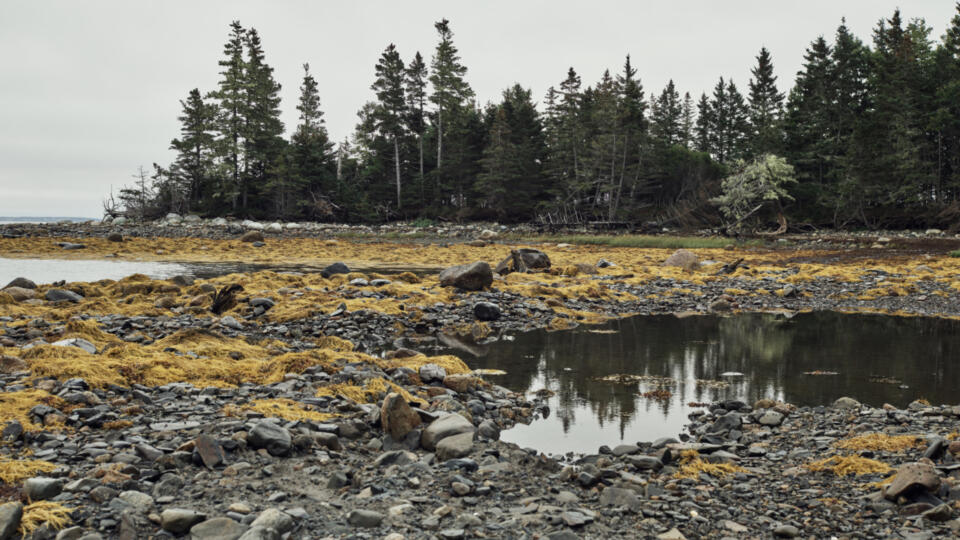
In addition to tourism, Oak Island has brought substantial economic benefits to the local community. Jobs related to the tourism industry, such as tour guides, accommodation providers, and restaurants, have flourished as a result of the island’s enduring popularity. Furthermore, the ongoing treasure hunts and excavations have brought attention to Nova Scotia’s rich history and natural beauty, helping to promote the province as a unique and fascinating destination.
Culturally, Oak Island has become an integral part of the folklore and identity of the region. The island’s story has been passed down through generations, and its mystery is woven into the broader narrative of Nova Scotia’s history. The island’s connection to pirates, ancient civilizations, and secret societies has captured the imagination of many, adding layers of intrigue to Nova Scotia’s cultural landscape. Moreover, the island serves as a symbol of resilience and human determination, as the treasure hunters who risk their fortunes to uncover the island’s secrets embody a spirit of adventure and perseverance.
The Role of Local Government and Legislation
While Oak Island has captivated the global imagination, it has also been subject to various governmental regulations and oversight, particularly regarding its ownership, excavation, and preservation. The island is privately owned, and its current owners, the Oak Island Tours, Inc., are responsible for overseeing the ongoing treasure hunts. The local government has maintained an interest in the island, as it is an important part of the cultural heritage of Nova Scotia. However, due to the island’s status as a private property, the province’s involvement is typically limited to ensuring the safety of those involved in excavations and overseeing the environmental impacts of any activities on the island.
In addition to its environmental significance, Oak Island is a part of Nova Scotia’s broader efforts to preserve historical landmarks. Over the years, there have been discussions about whether the island should be declared a historical site or museum, particularly if significant discoveries are made that could shed light on the island’s history. Efforts to balance preservation with exploration continue to be an important aspect of the island’s modern-day legacy. Local authorities and landowners alike have to tread carefully to ensure that treasure hunting activities do not damage the island’s delicate ecosystems or historic sites.
Environmental Concerns and Preservation
As treasure hunting has continued on Oak Island over the years, so too have concerns about the impact on the island’s delicate environment. The constant excavation of the island, particularly the digging of large holes and the use of pumps to control flooding, has the potential to disrupt the island’s ecosystems. The island’s wetlands, which serve as vital habitats for birds and other wildlife, could be damaged by the ongoing construction and excavation activities.
Furthermore, the island’s geology plays a crucial role in maintaining its overall environmental health. The flooding of tunnels and the use of heavy machinery can erode soil, disrupt water systems, and damage plant life. Despite these challenges, modern excavation teams are increasingly mindful of these environmental concerns, incorporating eco-friendly practices where possible and ensuring that their work minimizes harm to the island’s natural features.
There have been calls from conservationists to limit the scope of excavation on the island, suggesting that future efforts should focus on preserving Oak Island as a historical and ecological treasure, rather than solely on the pursuit of hidden riches. Balancing the island’s environmental preservation with its historical and cultural significance will continue to be a complex issue as excavation efforts proceed.
The Psychological Appeal of Oak Island
Beyond its physical and historical aspects, Oak Island holds a deep psychological appeal for those who become involved in its mystery. The hunt for treasure is more than just an attempt to uncover gold or artifacts; it represents a profound human desire to solve puzzles, uncover hidden truths, and achieve something extraordinary. For treasure hunters, Oak Island is not just an island; it is a symbol of potential and possibility, a place where the ordinary can intersect with the extraordinary.

The psychological draw of Oak Island is also tied to the persistence and determination of those who search for answers. As decades of excavations have shown, uncovering the secrets of Oak Island is a daunting and expensive task, fraught with setbacks, disappointments, and danger. Yet, the mystery persists, and the lure of the unknown continues to captivate people. The idea that something valuable—whether material or spiritual—lies just beneath the surface, waiting to be found, taps into a deep human instinct to seek and discover.
In a sense, the Oak Island mystery represents a metaphor for life itself: a journey filled with uncertainty, obstacles, and unanswered questions. The treasure hunters’ journey is not only about discovering wealth, but about unraveling the unknown and challenging the limits of human knowledge and capability.
The Enduring Mystery and What’s Next for Oak Island
As the treasure hunt on Oak Island continues, the future of the island remains as uncertain as ever. Will the elusive treasure ever be found? Will the true purpose of the Money Pit and its associated water systems be revealed? As of now, the answer remains unclear, and each new discovery only raises more questions than answers.
What is certain, however, is that Oak Island’s legend will likely continue to captivate the world for many years to come. With each new season of The Curse of Oak Island, each new excavation, and each new technological advancement, the mystery remains alive, drawing people from all corners of the globe to witness the ongoing quest for answers. Even if the treasure is never uncovered, Oak Island will undoubtedly leave an indelible mark on the world’s collective imagination.
Oak Island’s significance goes beyond the hunt for treasure. It is a symbol of the human quest for meaning, the allure of the unknown, and the drive to solve puzzles that defy understanding. In the end, Oak Island is a place where history, nature, mystery, and human ambition collide, creating a story that will continue to unfold as long as curiosity persists.
Whether Oak Island’s secret will ever be revealed is uncertain, but the island’s impact on the world of exploration, mystery, and cultural folklore is undeniable. With every dig, every theory, and every attempt to uncover the truth, Oak Island remains one of the most enduring and fascinating mysteries of all time.
The Role of Mythology and Legend in Oak Island’s History
The legend of Oak Island has taken on mythological proportions over the centuries. As with many ancient mysteries, folklore plays a significant role in shaping how we view the island and its secrets. The more we hear about the mysterious “curse” or the potential treasure, the more the island becomes not just a physical place but a symbol of an enduring myth—a place that embodies all the human fascination with the unknown and the supernatural.
In the 19th century, as the treasure hunts on Oak Island became more widely known, rumors and theories surrounding the island began to evolve into a folklore of their own. Tales of a vast fortune hidden by pirates, nobles, or even the ancient Templars became part of the island’s mythology. Over time, people began to imagine a much grander story behind the island, filled with hidden messages, ancient rituals, and supernatural forces. The island became more than just a physical site—it became a symbol of mystery, of hidden truths, and of the human desire to uncover secrets long buried.

One of the most intriguing aspects of Oak Island’s mythology is its “curse.” The idea that anyone who seeks to uncover the island’s treasure will meet with misfortune is a central part of the mythos surrounding the island. The curse has been so enduring that it has been passed down from generation to generation. Although modern treasure hunters dismiss it as superstition, the island’s long history of setbacks and tragedies only adds fuel to the fire of this mythical belief. The constant failures and disasters that have plagued expeditions—flooding tunnels, collapses, and mysterious deaths—have only intensified the idea that something far more sinister than mere bad luck is at play.
Moreover, the island’s role in popular culture has ensured that these myths continue to evolve. The island has been featured in a variety of fictional works, including novels, films, and even video games, where the treasure hunt becomes a grand, heroic quest. Through these stories, Oak Island has transformed into a place where myth and history blur together, and where fact and fiction meet to create an even more compelling narrative. The allure of Oak Island is often more about the journey to uncover hidden truths rather than the specific outcome, and this mythological aspect continues to attract treasure hunters and enthusiasts from around the world.
The Complex Relationship Between Modern Science and the Oak Island Mystery
Over the past century, scientific methods have played an increasingly important role in the search for answers on Oak Island. While the mystery of the island originally captivated treasure hunters with rudimentary tools such as pickaxes and shovels, modern scientists and engineers have brought a wealth of advanced technology to the excavation process. However, these scientific advancements have also raised questions about the limitations of technology in solving the mysteries of Oak Island.
Ground-penetrating radar (GPR), electromagnetic surveys, and sonar imaging have enabled researchers to map the island’s underground features with unprecedented accuracy. These tools have allowed scientists to detect anomalies beneath the island’s surface, such as voids, tunnels, and possible man-made structures, that could be linked to the legend of the Money Pit. For example, sonar scans have revealed hidden chambers or tunnels in the water surrounding Oak Island, raising the possibility of a vast underground network that was deliberately constructed.
Despite these technological breakthroughs, however, many scientists argue that the real challenge of solving the Oak Island mystery lies not in technology but in interpretation. The island’s geology is complex, and the array of features—such as flooded tunnels, layers of wood and stone, and intricate drainage systems—pose unique challenges for those trying to understand them. Some experts have suggested that the tunnels and structures uncovered may not be part of a grand treasure conspiracy but rather natural formations shaped by water, weathering, and other environmental factors over thousands of years.
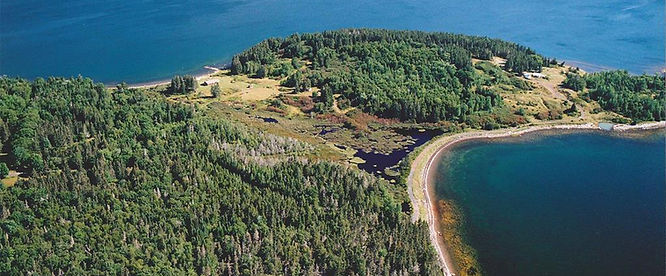
Furthermore, the theories that tie the island to pirates, the Knights Templar, or ancient civilizations often clash with the more scientifically grounded views. There is ongoing debate within the academic community about how to approach Oak Island from a scientific standpoint. For some, the mystery is simply a byproduct of the human tendency to imbue ordinary places with extraordinary meaning. For others, the quest for answers is one of the last great unsolved puzzles that could reveal a deeper connection between history and geology, or even offer proof of ancient civilizations’ reach across the seas.
The tension between these competing perspectives—science versus myth—will likely continue to shape the narrative of Oak Island. For the modern treasure hunter, these scientific techniques provide both tools for uncovering the truth and a way to verify or disprove long-standing theories about the island. The mystery of Oak Island, however, is a reminder of how history, myth, and science can intersect in unexpected and sometimes contradictory ways.
Environmental and Geopolitical Concerns: The Future of Oak Island
In addition to the scientific challenges of Oak Island, there are growing concerns about the environmental and geopolitical issues that come with excavating a site of such historical and ecological significance. Oak Island, as a part of Nova Scotia, is subject to Canadian environmental regulations designed to protect fragile ecosystems and historical sites. While the island’s private ownership means that excavation is primarily in the hands of Oak Island Tours, Inc., there are still restrictions and oversight imposed by local authorities. For example, any excavation that threatens to harm local wildlife or disrupt the natural beauty of the island must undergo rigorous environmental assessments.
Oak Island’s environmental importance is tied to the sensitive nature of the wetlands, forests, and coastal areas surrounding the island. The island’s diverse ecosystem provides habitats for birds, plants, and other species, many of which are integral to the region’s biodiversity. Excavation activities, such as the digging of pits, draining of water, and the use of heavy machinery, pose risks to these delicate environments. As public awareness of environmental conservation grows, pressure from environmental organizations and local communities has led to calls for stricter regulations on the excavation processes.

Additionally, Oak Island’s ownership and the rights to explore and excavate its resources have become points of interest in the broader geopolitical landscape. The island’s role in local heritage and tourism has turned it into a significant cultural resource for Nova Scotia, and its fame has prompted international interest. Many treasure hunters, film crews, and historians have flocked to the island from all over the world, leading to questions about who has the right to the island’s resources, as well as how to protect the island’s cultural integrity from exploitation.
The future of Oak Island likely depends on a careful balance between exploration, environmental protection, and cultural preservation. Ensuring that the island is treated with respect and that its significance is preserved for future generations will be key as new discoveries continue to emerge. Ultimately, Oak Island’s ability to maintain its mystery and appeal will depend on how these complex issues are navigated in the years to come.
The Cultural Impact of Oak Island on Local Communities
While Oak Island has a global reputation, its cultural impact is particularly significant in the local communities surrounding it, including the town of Chester, Nova Scotia. These communities have long been tied to the island’s rich history, both in terms of the ongoing treasure hunt and the local lore that has developed over generations. The island has played a key role in shaping the identity of the area, influencing local traditions, economy, and even the regional psyche.
The island is often a central part of local storytelling, with residents recounting tales of treasure hunters and the long history of attempts to unearth riches. These stories have become part of the town’s cultural fabric, and Oak Island’s mystery often surfaces in casual conversations and social gatherings. For local residents, Oak Island has become a symbol of perseverance, and many view the treasure hunt as a part of the area’s collective history, even if the treasure itself remains elusive.

The island’s legendary status also brings with it a sense of pride. Locals see Oak Island as a unique part of their heritage, and they take great interest in the ongoing efforts to unravel its mysteries. The idea of Oak Island’s treasure being buried just off their shores, in a place that holds significance for so many, fosters a sense of connection to something larger than their everyday lives. For generations, the island has remained a focal point of local pride, a place that draws people from around the world and brings attention to the history and culture of Nova Scotia.
Moreover, Oak Island’s prominence in popular media has reinforced its importance to the local community. The success of The Curse of Oak Island television series has led to increased tourism in the area, and local businesses have benefitted greatly from the influx of visitors eager to learn more about the island’s mystery. Tour guides, hospitality services, and small businesses offering souvenirs have flourished, allowing residents to share in the economic benefits of the island’s fame.
The Future of Oak Island: Continued Exploration and Conservation
The future of Oak Island lies at the intersection of further exploration, preservation, and public interest. As modern excavation methods continue to advance, there is hope that new technologies and tools could lead to breakthroughs in the search for the island’s treasure or uncover the truth behind its peculiar features. For instance, advanced geological mapping, drone surveillance, and environmental monitoring are just a few of the technologies that could be used in the coming years to map the island more comprehensively and explore areas that were previously inaccessible. These new methods might help reveal hidden chambers or tunnels, further deepening the mystery and advancing our understanding of the island’s geological and historical context.
The continuing fascination with Oak Island is likely to inspire future generations of explorers, historians, and scientists. Its mysteries are vast and complex, offering an ongoing challenge for researchers seeking answers. As the island’s allure persists, it will undoubtedly continue to attract both amateur treasure hunters and serious scholars alike, each hoping to solve the riddle of Oak Island.
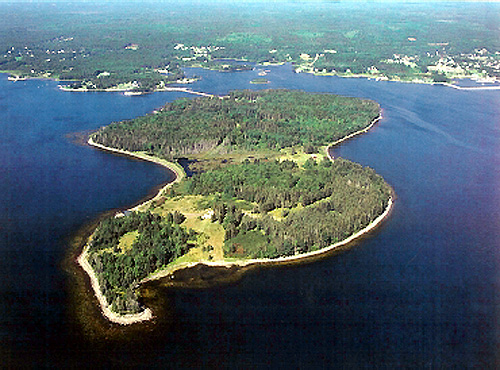
However, as exploration continues, the island’s preservation will remain a key concern. The environmental and cultural significance of Oak Island must be safeguarded to ensure that future generations can continue to appreciate the island not only for its mystery but also for its natural beauty and historical importance. Environmental regulations, conservation efforts, and responsible excavation practices will be crucial in protecting Oak Island’s fragile ecosystems, as well as its archaeological and cultural heritage.
Ultimately, the future of Oak Island may not solely be about uncovering treasure but about ensuring that its history, mystery, and the lessons it holds about human curiosity and perseverance are preserved for posterity. The ongoing work at Oak Island, regardless of whether it leads to the discovery of riches, will continue to contribute to the broader narrative of human exploration and the search for meaning in the face of the unknown.
The Psychological Impact of Oak Island’s Mystery on Society
The enduring mystery of Oak Island taps into a deeper psychological need that many people share: the desire for discovery and the allure of the unknown. Throughout history, humans have been captivated by mysteries, whether they relate to lost civilizations, hidden treasures, or unexplained phenomena. Oak Island represents the quintessential mystery, where the possibility of uncovering something significant—whether material or philosophical—drives individuals to push the boundaries of what is known.
The idea that something of immense value or importance is hidden beneath the surface of the island resonates deeply with our collective psyche. It speaks to the human instinct to search for treasure, not just in the physical sense, but in the intellectual and spiritual realms. Oak Island’s mystery serves as a metaphor for the human condition: our constant search for meaning, truth, and answers to questions that have no clear resolution.

For those involved in the treasure hunt, whether it be the seasoned researchers or casual enthusiasts, the quest itself becomes just as important as the discovery. The psychological aspect of the journey—the excitement, the frustrations, and the moments of hope—is what keeps people coming back. Oak Island has become more than just an island; it is a symbol of perseverance, the thrill of the chase, and the belief that something great is waiting to be found.
In a broader societal context, Oak Island’s mystery taps into the human fascination with secrets and forbidden knowledge. Our culture has long been fascinated by the idea of hidden truths, especially those that seem to challenge conventional understanding. This intrigue has only grown as the internet and media have made mysteries like Oak Island more accessible to the masses. The allure of Oak Island, and its potential to reveal something extraordinary, serves as a modern-day version of the myth of El Dorado or the search for Atlantis—mysteries that have captivated generations and continue to spark our collective imagination.
Oak Island’s Timeless Appeal
The mystery of Oak Island has endured for centuries, and it shows no signs of fading from the collective consciousness. Whether or not the island’s treasure is ever found, Oak Island remains a symbol of humanity’s eternal quest for discovery, an emblem of the drive to uncover the unknown, and a reminder of the complexities and contradictions that exist between myth and reality.
As technology advances, the search for Oak Island’s secrets will continue to evolve. New theories will be tested, new methods will be employed, and new discoveries will be made. But regardless of the outcome, the island’s timeless appeal will persist, a testament to the power of mystery in our lives and the importance of curiosity in shaping the future. Oak Island represents more than just a place—it represents the limitless potential of human exploration and the endless fascination with uncovering the mysteries that lie beneath the surface of the earth.
The island’s influence on our imagination is profound, and the story of Oak Island will continue to captivate the hearts and minds of future generations. As long as there are those who dare to dream, to explore, and to challenge the unknown, Oak Island will remain one of the most enduring and compelling mysteries ever told.
Conclusion: Oak Island’s Enduring Legacy
Oak Island, with its centuries-old mystery, is more than just a physical location—it’s a symbol of humanity’s unyielding drive to uncover the unknown. From its initial discovery in the late 18th century to the modern-day treasure hunts that continue to capture the world’s attention, Oak Island has become an emblem of the intersection between history, myth, and human ambition. Whether it’s the pursuit of hidden treasure, the challenge of deciphering its elaborate and enigmatic features, or the allure of ancient secrets, Oak Island has woven itself into the fabric of global folklore, creating a mystery that is both timeless and tantalizing.
The island’s rich history, from the early attempts at exploration to the ongoing excavation efforts, has kept researchers, treasure hunters, and curious visitors engaged for over two centuries. Oak Island has drawn people from across the globe—some seeking fortune, others seeking knowledge, and many simply seeking to satisfy an unshakable curiosity. The blend of fact and legend surrounding the island has made it a place of fascination, with every new discovery, no matter how small, fueling speculation and intrigue. The mystery of the Money Pit, the elaborate drainage systems, the puzzling artifacts, and the repeated failures have all contributed to Oak Island’s mystique, making it a modern-day treasure hunt shrouded in mythological proportions.

Equally significant is the environmental and cultural impact Oak Island has had on the local communities in Nova Scotia. The island has influenced local identity and economy, boosting tourism and drawing visitors eager to explore the mysteries of the island. For residents, Oak Island represents more than just a historical site; it has become an integral part of their local heritage and culture, binding the people to the island’s mysterious allure. The island is an inseparable part of the region’s history and continues to shape local narratives through its folklore, tourism, and ongoing treasure hunts.
The role of modern technology, with advancements in excavation techniques, mapping, and environmental conservation, has allowed Oak Island to remain relevant in the search for its secrets. Despite these breakthroughs, the true nature of the island’s mysteries remains elusive, leading to the persistence of both scientific inquiry and speculative theories. From the potential connection to pirates, the Knights Templar, and other historical figures, to the more practical explanations rooted in geology and environmental changes, Oak Island continues to be a focal point of debate, research, and imagination.

The psychological allure of Oak Island lies in its representation of the universal human desire to solve puzzles, uncover hidden truths, and achieve something monumental. The island taps into a deep-seated curiosity, an adventurous spirit, and the yearning to discover something that will redefine history. It is a testament to human perseverance—where each setback is not seen as a defeat but as a step closer to uncovering something greater. This persistence in the face of challenges, whether material or intellectual, mirrors the broader human experience of seeking meaning and purpose in the face of uncertainty.
At its core, Oak Island is a place of paradox—a location where myth meets reality, history collides with modern exploration, and the natural world intertwines with human aspirations. Whether or not the treasure hidden on Oak Island is ever found, the island’s mystery has proven to be much more than the search for gold. It is about the journey—the desire to solve the unknown, the exploration of history, and the exploration of the human spirit.
In the end, Oak Island will forever remain a beacon for those who seek adventure, discovery, and the thrill of the hunt. Its legacy, shaped by myth, history, and science, will undoubtedly continue to captivate future generations. Oak Island’s enigma is not just a puzzle of its own making but a reflection of the endless curiosity that propels humanity forward, compelling us to dig deeper, search further, and always question what lies beneath the surface. As long as the island remains shrouded in mystery, Oak Island will remain an enduring symbol of the endless pursuit of knowledge, treasure, and truth.
Latest Updates




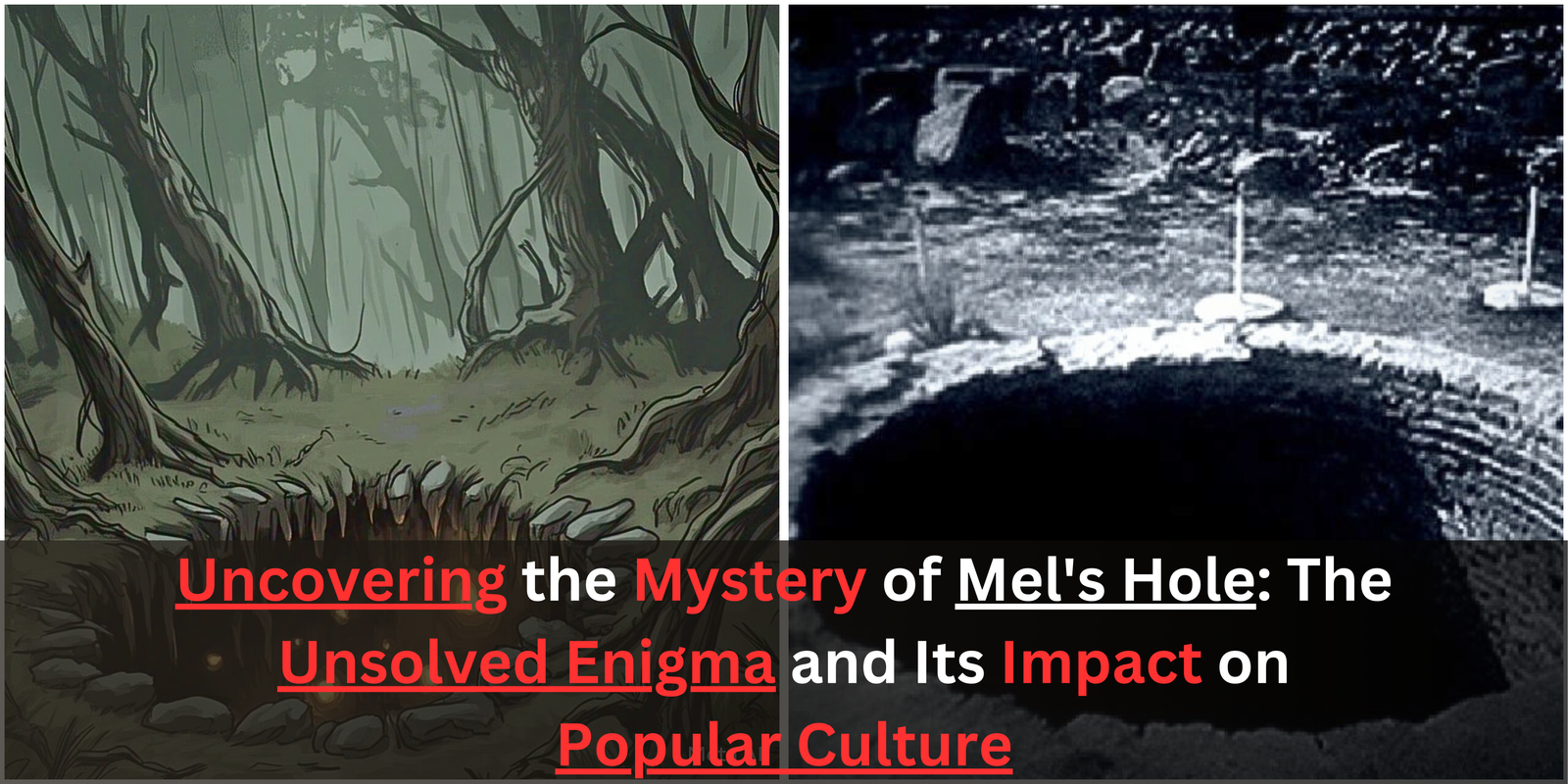

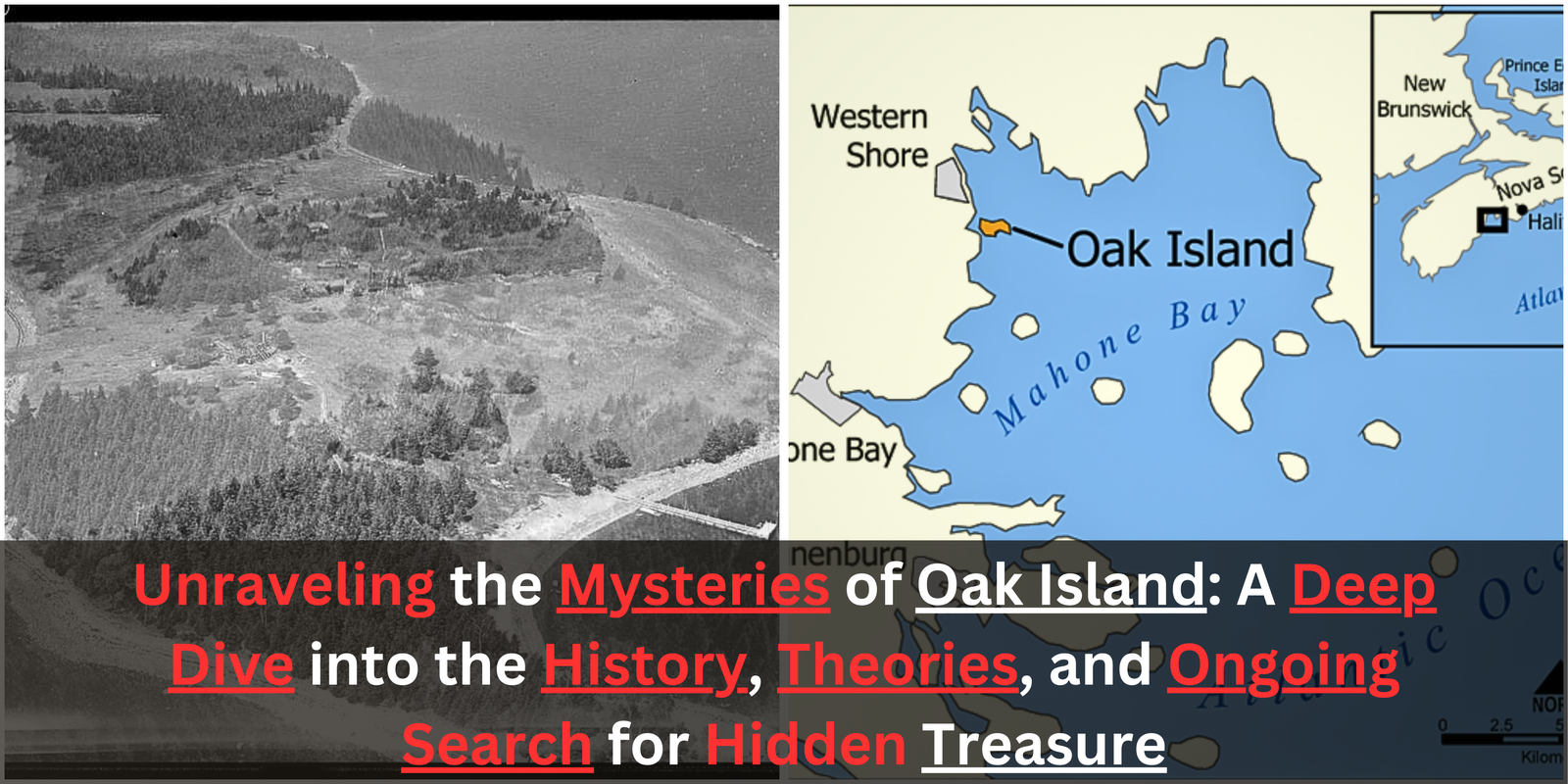
 Let’s imagine, explore, and uncover the mysteries together!
Let’s imagine, explore, and uncover the mysteries together!